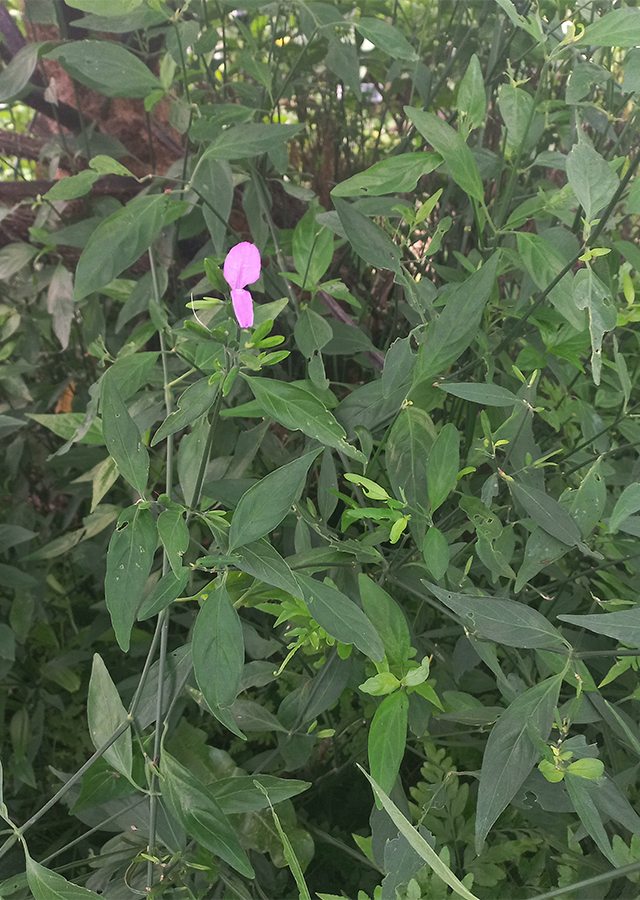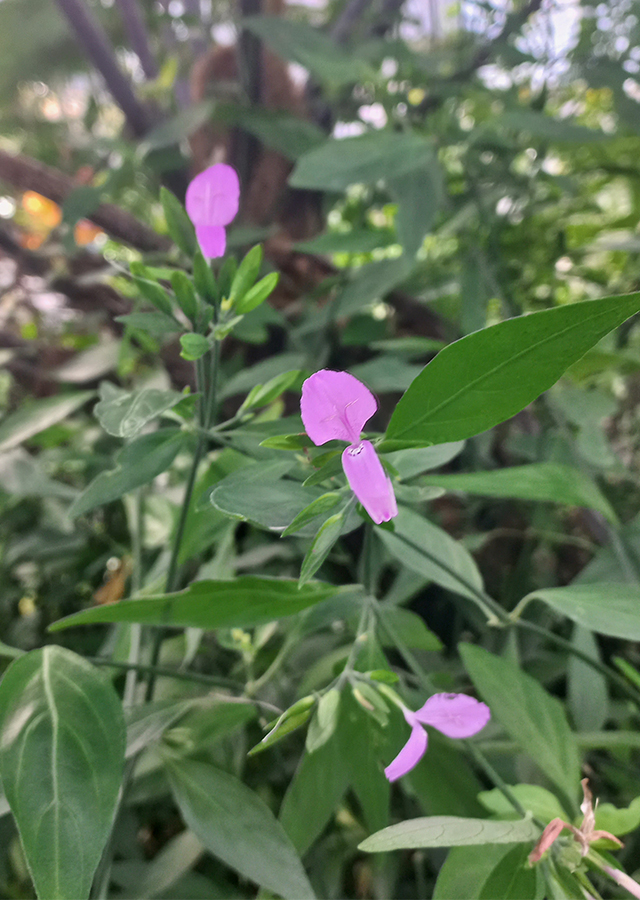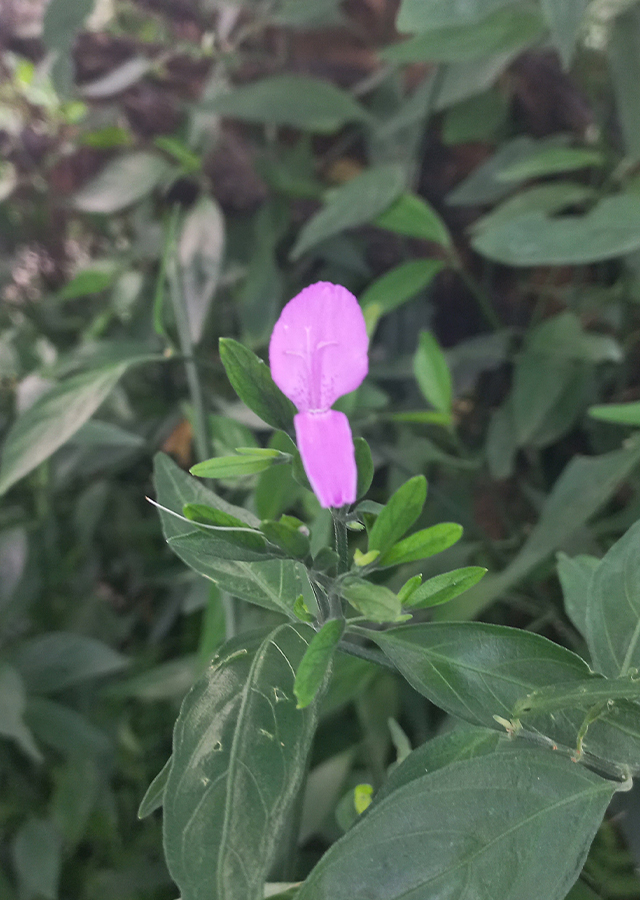Magenta Plant
Dicliptera tinctoria Nees Kostel.
Acanthaceae
Location in our garden
Green House



Synonym
Justicia bivalvis L.
Peristrophe bivalvis (L.) Merr.
Peristrophe tinctoria Nees
Habitus
Herbaceous. A much-branched, perennial, herbaceous plant growing about 1 m tall
Part Used
Leaves
Growing Requirements
Need Shade
Habitat
Terrestrial
Overview
Dicliptera tinctoria is distributed from eastern India and Sri Lanka to central China, Taiwan, the Philippines, Malaysia, and Java. It is (or was) cultivated in India (Bengal and Assam), the southern Philippines, and rarely, in Java. Often the plant is semicultivated, as a relic of former cultivation. A dye is obtained from the plant. Much used in Asia, it is gathered from the wild, occasionally semi-cultivated and sometimes also fully cultivated.
Vernacular Names
Noja (Malay), Deora - Kaladuda - Taoda (Philippines), Kim long nhuôm (Vietnamese).
Agroecology
Often found on cultivated lands, in thickets and coconut groves, often probably a relic of cultivation. Under supposed natural conditions it grows along watercourses in forests. In the Philippines it is cultivated up to 1.600 m altitude. Grows well in shaded conditions (morning sun only), requires fertile soil (sandy loam and sandy loam), high humidity, low temperature, low light intensity and normal pH.
Morphology
- Stems - subquadrangular, usually swollen above the nodes, pubescent, especially apically, or nearly glabrous.
- Leaves - opposite, membranaceous, ovate to lanceolate or oblong, 7-16 cm × 2.5-7.5 cm, cuneate to rounded at base, acuminate at apex, margins entire or shallowly undulate, glabrous above, sparingly pubescent beneath; petiole 0.5-3(-4) cm long.
- Flowers - in terminal cymes, which are composed of 1-4 involucres, each involucre with 2-6 flowers and 2 large, unequal bracts; calyx 3-7 mm long, pilose with ordinary and glandular hairs; corolla 3.5-5 cm long, with long, tortuous tube and bilabiate, resupinate limb, pubescent outside, reddish-violet, sometimes pale; stamens 2, inserted near the top of the corolla tube, long-exserted, filaments retrorsely hirsute; style filiform, 2-lobed.
- Fruits - clavate to ellipsoid capsule, 1.5-2 cm long, pubescent, 2-valved with 2 orbicular.
- Seeds - flat and slightly tuberculate seeds per valve.
Cultivation
Propagated by seeds and stem cuttings.
Chemical Constituents
Alkaloids, saponins, triterpenoids, tannins, and flavonoids.
Traditional Medicinal Uses
- In traditional medicine, a poultice made from the pounded leaves is reported to relieve skin complaints.
- As a treatment for cough, dysentery, diarrhea and bronchitis.
- The plant has antihypertensive and antilipidemic activity.
Part Used
Reference Sources
- Fern, Ken. Useful Tropical Plants. (2021). Dicliptera tinctoria. http://tropical.theferns.info/viewtropical.php?id=Peristrophe+roxburghiana. 27-10-21.
- Plant Resources of South East Asia. Dicliptera tinctoria. https://uses.plantnet-project.org/en/Peristrophe_bivalvis_(PROSEA). 27-10-21.
